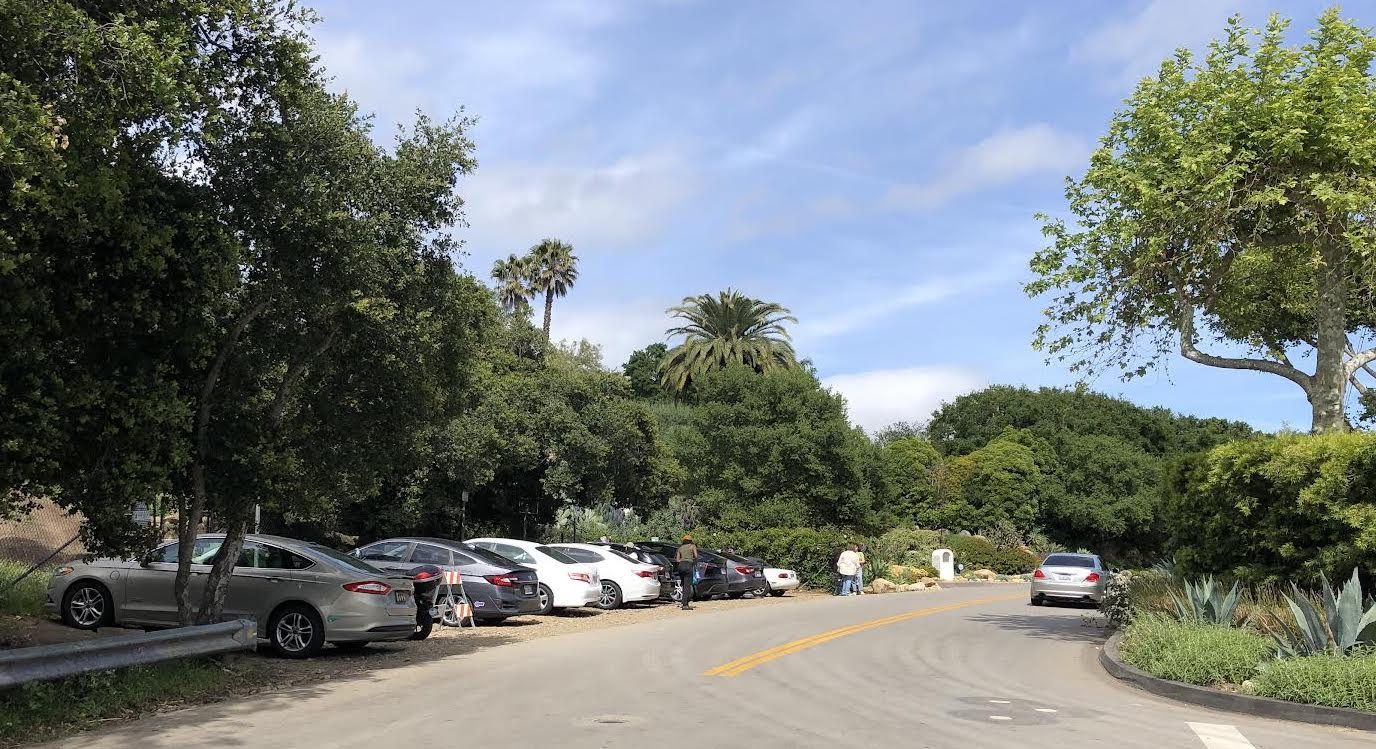Santa Barbara County Scores Big Win in Lawsuit Brought by Hot Springs Neighbors
Court of Appeal Overrules Local Court and Allows Removal of Rocks and Landscaping in Right-of-Way

[Updated: Mon., July 31, 11:30am]
Santa Barbara County finally scored a win over the rocks and landscaping along East Mountain Drive in a Court of Appeal ruling last week that allows Public Works to clear the right-of-way along the public road near the Hot Springs trailhead in Montecito.
The Court of Appeal decision determined that the county’s Road Commissioner, aka Public Works Director Scott McGolpin, had the right to enforce the county’s ordinance that areas beside the road were “clear zones” that were to be used for parking, emergency vehicle travel, and emergency egress. Further, the homeowners seeking to curtail the county “have an obligation to obey the laws, including the encroachment laws.” And, “The trial court may not allow CEQA to trump the criminal law.”
The court awarded costs on appeal to the county.
The case began — as many things did, like working from home, ordering drive-thru cocktails, and dining in restaurant parklets — during the coronavirus pandemic. Outdoor exercise was emphasized by health officials, and photos of the pools at the top of Hot Springs Trail went viral, drawing a regular crowd of local hikers and visitors from around the world. They parked wherever they could, including in residents’ frontages.
In response, “landscaping, boulders, smaller rocks, trees, bushes and signs” sprouted alongside the road to prevent parking, the Court of Appeal noted, which caused people to park into the road. Hikers also parked on the banks of Hot Springs Creek, despite the “No Parking” signs. The parking melee on narrow Riven Rock Road, which is just opposite the trailhead, grew so bad that the Montecito Fire District took steps to prevent parking along Riven Rock, removing dozens of spaces.
By September 2021, the problem reached the County Board of Supervisors, which allowed $100,000 to study the problem, and Public Works found that removal of encroachments from three nearby properties would allow more parking. Notices were initially sent to three homeowners advising them to remove their stuff, and the county later sent 11 more in order to preserve its rights on a cross-complaint.
Four landowners on East Mountain Drive, none of whom had received one of the first three notices sent, filed in the Superior Court, asking for an injunction to prevent the clearing. The neighbors were not opposed to hikers enjoying the trail. In fact, one of them, Ross Bagdasarian — whose father had given the world Alvin and the Chipmunks — years ago created about eight nose-in parking spaces on his land at the trailhead. But one of the residents’ legal arguments was that the clearing would increase parking for Hot Springs Trail, which had environmentally sensitive areas; thus, a CEQA (California Environmental Quality Act) review was required to determine if the clearing — and increased parking and hiking — could harm the sensitive area.
The Superior Court, in giving the residents an injunction against the county, had noted the beauty of the landscaping in Montecito in general and along East Mountain Drive in particular. But the Court of Appeal disagreed that should carry any weight, stating that the area was like any other in Montecito, with similar sensitive habitat areas near creeks. As well, the appeal court agreed with the California State Association of Counties, which had filed an amicus brief, that the county had a public interest in enforcing rules against encroachment that was greater than any harm to the residents if the rules were enforced. In fact, the appeal court rationalized that the homeowners could move their plantings from the right-of-way to their own private land.
In finding for Santa Barbara County, the appeal court stated, “Removing the encroachments does not ‘increase’ or add new parking; it restores access to parking spaces that have always existed.” Allowing the encroachments would force parking into the road, which was a risk for fire safety and motorist, pedestrian, and cyclist safety, the court determined. As well, the county’s project intended to restore the existing roadway, maintain the safety of travel along the road, and “allow for safe public parking for the pedestrians and also cyclists going to the adjacent public trails.”
Regarding the next steps in the case, the attorneys for the residents stated they were assessing their options.
“Supreme Court review appears necessary given the important issues raised in the appellate decision,” David Cousineau with Capello & Noël later added.
Another hearing will occur in about 30 days, the county said, to discuss the remaining issues.


